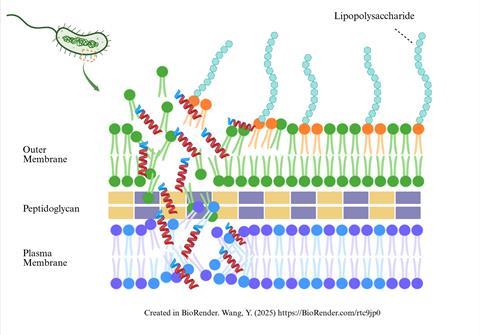Peptide-based therapies offer the potential to transform how we treat a range of conditions, including chronic wounds, hospital-acquired infections, and biofilm-associated infections on medical devices - but have yet to be adopted for widespread clinical use.

A new review in the Journal of Applied Microbiology, an Applied Microbiology International publication, uncovers the barriers to adoption and identifies ways to overcome these limitations.
READ MORE: Treatment with a mixture of antimicrobial peptides can impede antibiotic resistance
READ MORE: Peptide cocktails could be key to fighting antibiotic resistance
The paper, ‘A Critical View of Antimicrobial Peptides: Exploring their Potential and the Barriers to Realisation’, by scientists at the University of Manchester presents a critical analysis of antimicrobial peptides (AMPs), according to corresponding author Professor Andrew McBain.
Potential as anti-infectives
“Although there are many reports highlighting the potential of AMPs as anti-infectives, they have yet to reach widespread clinical use. We therefore set out to explore the reasons behind this. In doing so, we also considered the global issue of diminishing antibiotic sustainability and whether AMPs could be used to help prolong the effectiveness of existing antibiotics,” he says.
“Readers will be well aware that antibiotic resistance is a global crisis and that we are on the verge of a ‘post-antibiotic’ era.
“AMPs and bacteriophages are arguably the two main alternative antibacterial therapies often presented as partial solutions to this crisis. However, in both cases, a range of factors has delayed or limited their impact on the problem to date.”
Alternative to traditional antibiotics
The research field has seen progress in developing antimicrobial peptides as potential alternatives to traditional antibiotics as they stand out for their broad-spectrum activity, lower risk of resistance development, and their ability to target biofilms.
“However, despite their promise, they have not yet seen significant clinical uptake. The main challenges remain toxicity, instability, and effective delivery to the site of infection. Until these issues are addressed, AMPs will remain promising—but not yet practical—therapeutic tools,” Professor McBain said.
“This review highlights a shift in our approach to treating infectious diseases—from relying solely on conventional antibiotics to exploring alternatives like AMPs.
Self-assembling peptides
“It also highlights self-assembling peptides as underexplored yet highly promising candidates that could potentially overcome some of the limitations of classical AMPs. We hope that by distilling the advances in this field, we have broadened understanding of the strengths, weaknesses, potential, and limitations of AMPs as anti-infectives.”
Future research will need to focus on:
- Improving AMP stability and bioavailability through chemical modifications.
- Minimising toxicity via structural optimization and targeted delivery.
- Advancing clinical testing of AMP–antibiotic conjugates.
- Exploring the clinical utility of self-assembling peptides for localized therapies.
- Developing cost-effective synthesis strategies.
- Fostering collaboration between academia, industry, and regulators to support and streamline development.
The review was led by Navid Dad, a PhD student at the University of Manchester, under the supervision of Prof. Andrew McBain, Dr. Mohamed Elsawy, Dr. Gavin Humphreys, Prof Jian Lu, and Dr. Alain Pluen.
‘A Critical View of Antimicrobial Peptides: Exploring their Potential and the Barriers to Realisation’ is published in the Journal of Applied Microbiology, [academic.oup.com]
Topics
- Alain Pluen
- Andrew McBain
- antimicrobial peptides
- Antimicrobial Resistance
- Antimicrobials
- Applied Microbiology International
- Biofilms
- Community
- Early Career Research
- Gavin Humphreys
- Infection Prevention & Control
- Jian Lu
- Mohamed Elsawy
- Navid Dad
- One Health
- self-assembling peptides
- UK & Rest of Europe
- University of Manchester







No comments yet